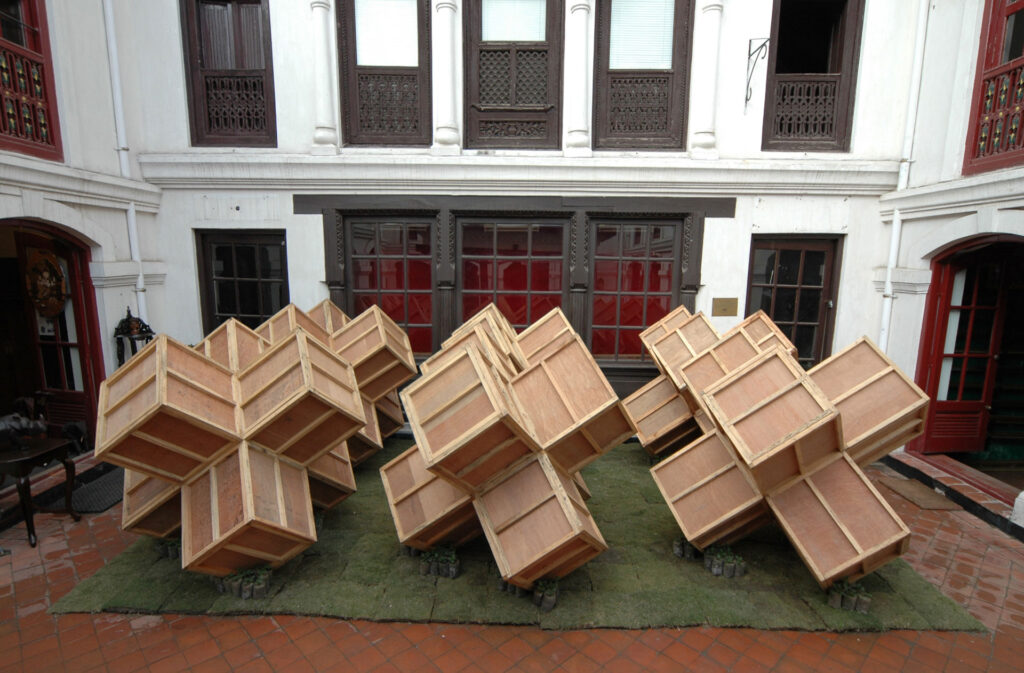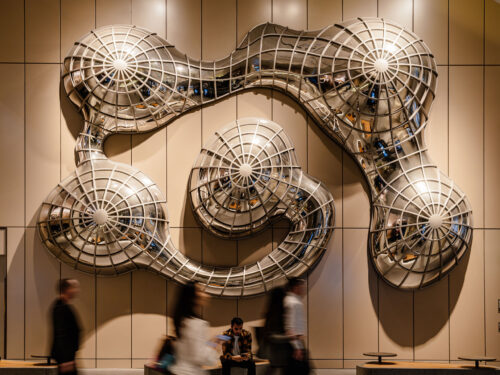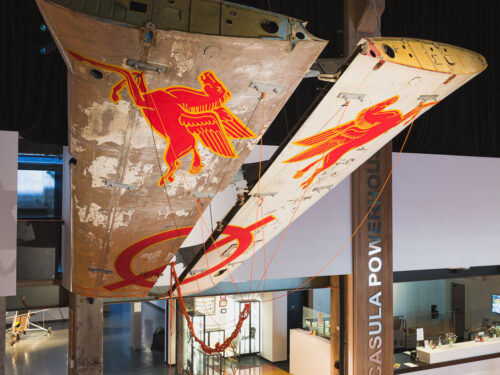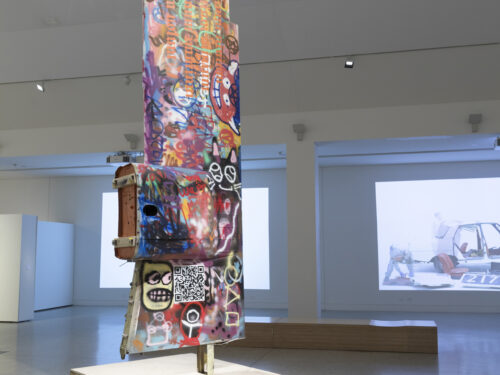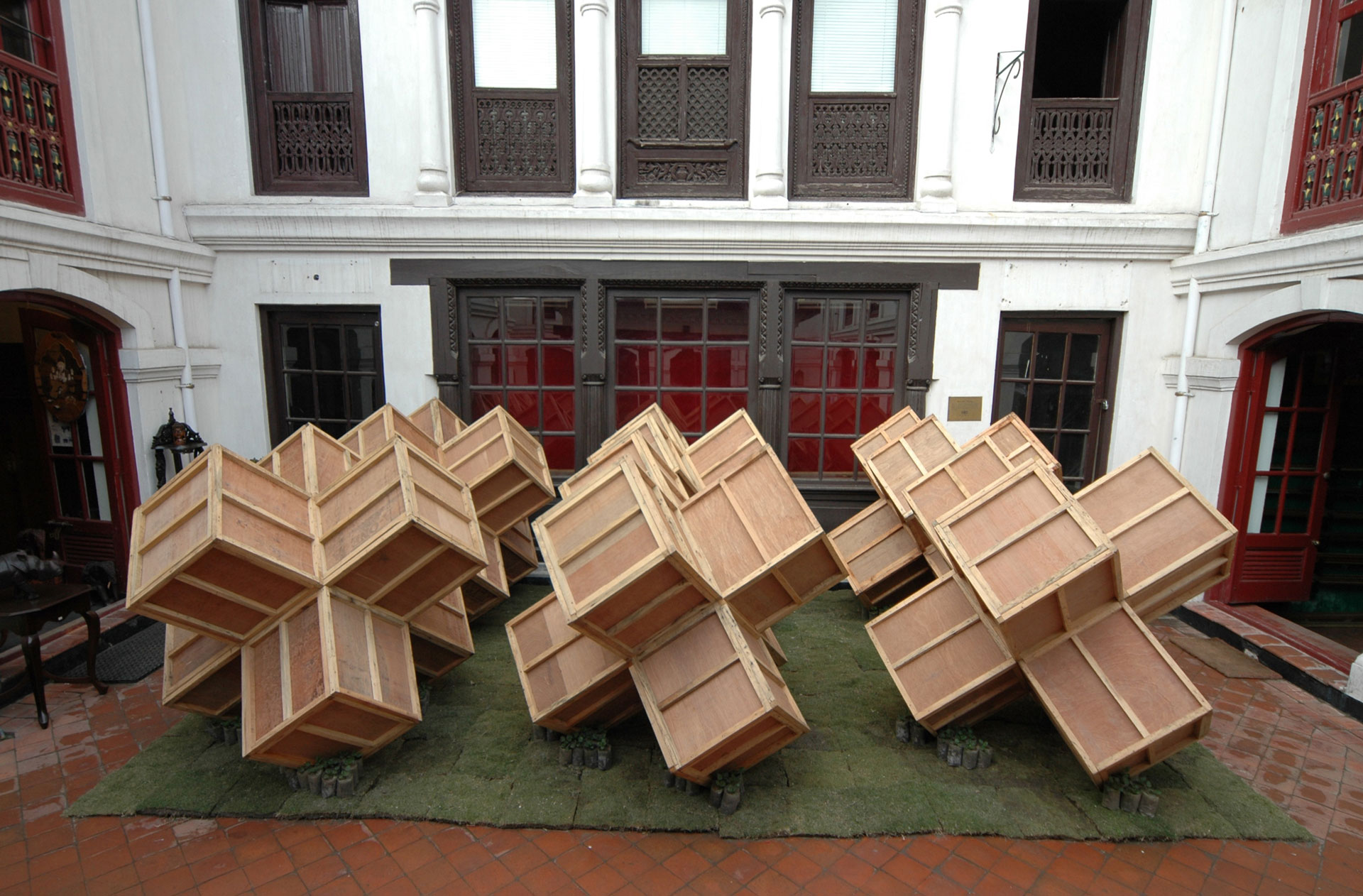
When the Bulls Fight the Calves get Crushed
we travelled to Nepal to work with Local Gallery Director- Sangeeta Thapa. Sangeeta Thapa operates Kathmandu’s premier contemporary gallery- Siddhartha Art Gallery. The space is located in Barbar Mahal, a space that was previously a cow shed, then converted into the residence for the deposed Rana royal family of Nepal and finally transformed into a high-end shopping enclave. The site’s rich history provided us much room to explore the themes of power and space that is frequently touched upon within our work.
During our period of research and work in Nepal, we also used the opportunity to take up tuition in Nepalese at the Thamel Nepali language Institute. This made it possible to converse with local people outside of the Kathmandu valley.
The original scope of our research was to study architecture within the immensity of geology. This was a comparative study which covered Switzerland and Nepal. To investigate this field we travelled through the Annapurna mountain ranges, trekking for 3 weeks, observing the manner in which people existed outside of modern transportation routes i.e. roads. The isolation of townsfolk living within the mountains creates such diversity, similar to Switzerland, with its countless languages and dialects existing within such a small place. The study of architecture within the mountains was as diverse. Higher up in the Himalayas much of the housing was carved into the cliff faces, using rock as the main building material. Large amounts of sand found in the riverbeds were also used as mortar. The use of donkey labour was prevalent in the districts. It was very interesting to investigate Nepal’s manual labour, and how efficiently and quickly buildings could be erected. In different ways the earth was used to either insulate housing as well making up the very fabric of the building. Local materials were always utilized however different styles were emerging in architecture the higher we ascended.
Nepal has been politically unstable for the past 8 years. The newly appointed King replaced the recently murdered King and his family of 2000. A lot of the residents think of the King unfavourably, and still prefer to hang pictures of the deceased family in their houses. There has been Maoist insurgence resulting in a minimum of 12, 000 deaths of the local people. Speaking with people in the mountains apparently many people are forced to join the Maoists against their own will. There are 6 political parties within Nepal, each one of them claiming power in some regard, two of the party’s are Maoist and Nepal is known to be the first country in the world to install a communist party on a national level by popular vote. Working within this politically charged environment, with many factors contributing to the political unrest, inspired us greatly in the production of our site-specific work, within the premises of the late Rana Royal family.
The resultant installation was titled: When the Bulls Fight, the Calves get Crushed. This is an old Nepalese saying which describes the plight of the small man caught in the grip of powerful forces beyond his control.
The installation consisted of six tetrapods placed upon a rectangle of grass. Small seedlings were placed at the base of the tetrapods. The tetrapod is the central element of this piece. The six-pronged shape is an extremely stable form. It is used as a barrier against the forces of sea tides and it is also used as a foil against army tanks.
In essence, this formal looking object is used as a device to claim space – either from nature or from other humans. The installation that we configured illustrated the vulnerability of existence in the midst of greater forces.
By manufacturing the shapes to resemble shipping boxes we imbued these solid objects an element of fallibility. I.e. there is no absolute power. But there is tension within the work: are the shapes protecting the seedlings or will they crush them?
During the period of our installation, the king dissolved the parliamentary executive. The country was put under a state of emergency. Many politicians and their families were put under house arrest. Sangeeta Thapa, our gallery director was put under semi-house arrest. She was not allowed leave her home before 9am and she had to be home before 6pm. She was subject to body searches and was unable to contact her children who were overseas for over a week.
This sudden change of situation in Nepal and our shock at being so near to the ‘action’ was a real wake-up call. Although our artwork has previously touched upon political power situations, it had never been so close to the epicentre of action. It was quite a unique experience.
